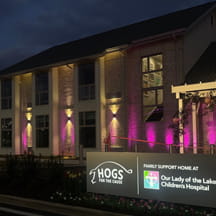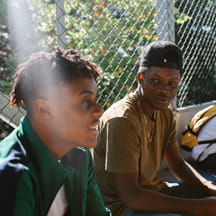Imagine frequently experiencing severe pain, but the cause of that pain is invisible to others. For people with sickle cell disease (SCD) unexpected bouts with pain are a reality. Children with SCD have the additional difficulty of explaining the seemingly hidden condition to peers. Twins Noah and Gabriel Cypress were diagnosed with SCD at birth, and the 10-year-olds grew to rely on each other and family to get through the pain crises.
The boys sound well beyond their years when explaining SCD. Without pause, they describe how the sickle-shaped blood cells differ from the flexible, round cells people without the disease carry. The pain, they will tell you, comes from the sickle cells getting stuck and not carrying oxygen to parts of the body. The brothers deal with the effects of pain together.
“When I’m in pain, it feels like pounding and pressure,” says Noah. “Gabe gets me a heat pack and stuff. Sometimes we encourage each other too and say, ‘It’s going to be okay. Don’t let the pain get you down.’” Gabriel also helps Noah by rubbing the inflamed areas where he’s hurting. “I try to make him feel better by giving him a distraction too,” says Gabriel. “I’ll turn on the television or get a game going so he won’t be focused on his pain.”
Find compromise
Their mom, LaToya, admits she and her husband, Brett, worked to not let fear affect decisions. Cold weather, extreme temperature changes and illness can trigger pain crises, so going to the pool or the playground can cause concern. “It’s very easy to let fear hold you back, but I would not let us fall into that trap,” LaToya says. “When they were little, I would go to the park with cleaning wipes. Eventually, we got a better understanding of how their bodies work and react to things.”
Brett and LaToya wanted the boys to live without a bunch of restrictions. The family relied on compromises. Instead of avoiding trips to the pool, they found heated pools.
Both boys have asthma, which requires more caution during cold and flu season. A cold is not just a cold for someone with SCD—Noah caught a cold and required a blood transfusion. A 101-degree temperature triggers a trip to Children’s Hospital of Richmond at VCU in Richmond, Virginia.
Unexpected benefits of medicine
Noah and Gabe have fewer bouts with pain since they started taking a drug to reduce the frequency of painful episodes. The medication lowers the severity of pain allowing home treatment for most pain crises instead of going to the hospital.
At their school's Perfect Attendance Award ceremony, LaToya remembers feeling like that award was out of the question for the boys. It wasn’t unusual for Noah and Gabe to miss at least 50 days a year between the two. Hydroxyurea helped change that.
Both boys received the award at least one grade period this school year. “The award symbolizes how much better they are doing physically,” says LaToya. “It shows progress going from years of weekly absences to a full nine weeks of no hospitalizations and completing school days with no medical emergencies. Despite medical challenges they continue to achieve academic success.”
Hope for a breakthrough
While medication makes a big difference for the boys, LaToya remains hopeful for progress toward a cure. “We’re hearing a lot about breakthroughs with stem cell transplants,” she says. “We’re appreciative of the research and excited about a potential cure.”


